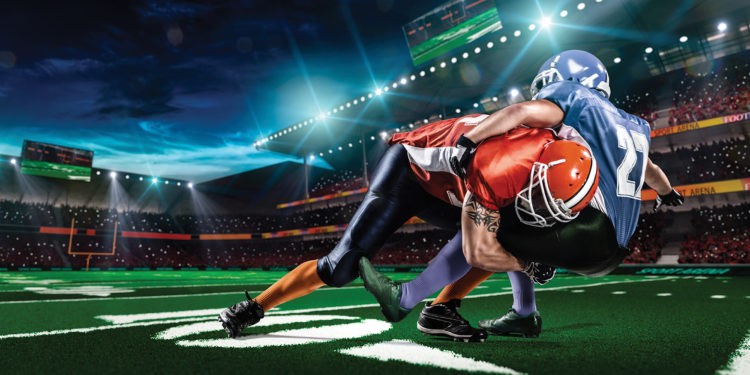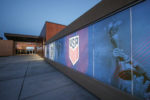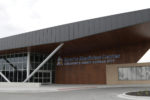Prolonging the Playing Time

In the first game of the 2008 season, the reigning MVP, Tom Brady was hit hard and low by a Kansas City Chiefs safety — Brady walked off the field, but tests later revealed a torn ACL and MCL, reminding us that even the best athletes are not exempt from sustaining an injury.
On fields, rinks, and courts across the country, there’s a new push to protect the people who put their health on the line in the name of sports. And it is these pro athletes who fearlessly compete to be the most outstanding in their field who usually pay the price for their talents.
According to the Bureau of Labor Statistics, professional athletes are among one of five occupations that have more than 1,000 injuries per 10,000 workers. Professional athletes risk injury every time they train, practice, and compete as injuries currently play a larger role than at any time in sports history. The 2000s saw injuries increase in three major U.S. sports: the NFL, Major League Baseball, and the National Hockey League. A more proactive approach is now being taken on preventing players from getting hurt, as well as a greater emphasis on keeping athletes healthy.

To shine some light on these devastating sports injuries, we talked with the experienced orthopedic surgeons at Rockhill Orthopaedics for their thoughts on caring for elite athletes. “We need to change the culture of the sport and how we respond to these athletes,” shared Dr. Jay Rapley, a board certified orthopedic surgeon. “It may be inconvenient, but the health of the athlete is of the utmost importance.”
FOOTBALL: Facing the Silent Opponent
Football isn’t just a contact sport, it is an intense game of extremely talented athletes colliding with one another as they put their skills to work with the goal of coming out on the winning side when the clock runs out. Injuries are a common part of the game — concussions, in particular. And the damage can reverberate past an athlete’s playing days. In 2009, the University of Michigan announced a shocking study of the long-term effects of repeated blows to the head. The study found that ex-NFL players over 50 were diagnosed with dementia at a rate five times the national average. “There has been significant research into injury prevention,” stated Dr. Wes Frevert of Rockhill Orthopaedics, adding that improved safety equipment and proper education on tackling technique can aid in reducing injuries in football.

BASEBALL: The three common strikes that knock a player out of the game
Baseball injuries have benched dozens of major players over the years with three common injuries topping the list. UCL injuries rank high for pitchers and catchers, many times requiring Tommy John surgery to repair the ulnar collateral ligament in the medial elbow. Just think about Salvador Perez, one of our favorite Royals’ players sidelined by damage to his UCL and is currently traveling down the rehab road. Oblique strains are right up there as these muscles work with core muscles to transfer force from a player’s lower extremity to their shoulder — that’s how the ball is thrown with such quick speed and delivery. Royal’s pitcher Ian Kennedy has been on the disabled list in the past due to this type of strain as have other pitchers in MLB. Lat injuries round out the list, another muscle injury that plagues pitchers as it is used to rotate the shoulder during the acceleration phase. Dr. Frevert articulated that “limiting pitch counts, according to a player’s age, can reduce the risk of shoulder and elbow injuries in baseball and softball players.” As with so many young athletes specializing in these sports early in their high school careers, it can put them at risk for arm trouble later in their professional career.
PLAYING THROUGH THE PAIN
Contrary to Hollywood myth, trainers do not drug or “shoot up” a player to get them out and win the big game. “Playing through some discomfort is part of competitive athletics but it is important to recognize when that pain represents an injury that could be aggravated and requires rest or other treatment,” noted Dr. Frevert. “Differentiating benign pain from a serious injury can sometimes be challenging and it is critical for the athlete to communicate their symptoms to their parents, training staff or physician,” he added.

MIND, BODY AND SPORT
Despite years of careful planning and training, sometimes things don’t go according to plan. When you’re a competitive athlete, injuries are more than just a nuisance — they’re career-threatening. Beyond the physical agony, they present a major attitude test, and the ways athletes respond can often be a lesson for life as much as for their sport.
“It is not just about surgery and the rehab that follows but overcoming the fear and emotions from the original injury can be very difficult,” shared Dr. Rapley. “Some players can take up to two or more seasons to overcome these physical and emotional challenges.”
Recovering from an injury requires staying in the proper frame of mind. If an athlete remains in low spirits and feels there is no hope to return after an injury, he may not rehab properly. “Over the last several years, many studies have focused on the psychology of rehab. We are finding significant links between an athlete’s confidence and the rate of recurrent injury as they return to competition,” said Dr. Frevert.
Injuries, while hopefully infrequent, are often an unavoidable part of sport participation. Orthopedic Sports Medicine physicians agree that proper training and precautions can help prevent a promising athletic career from being cut short. Thanks to a proactive and preventive training approach, players will be able to continue to celebrate on the field long into their careers.
For more information on Rockhill Orthopaedics, call 816-246-4302 or visit them at rockhillortho.com






